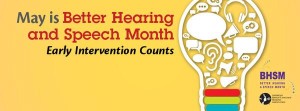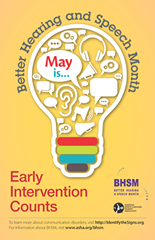This blog was cross-posted from the Office of Career, Technical, and Adult Education blog.
Reminder: Public comment period on the 5 proposed notices of rulemaking is now closed.
The Workforce Innovation and Opportunity Act (WIOA) aims to increase access to and opportunities for employment, education, training, and support services, particularly for individuals with the greatest barriers to employment. WIOA, which marks the most significant change to the Federal adult education, vocational rehabilitation, and workforce development systems in more than a decade, promotes stronger alignment of workforce, education, vocational rehabilitation, and other human services systems in order to improve the structure and delivery of services to individuals, including adults and youth with disabilities and others who face barriers to employment.
While the Departments of Labor, Education, and Health and Human Services have always strived to create and expand access to education, training, and employment opportunities for the millions of youth and adults who seek services through their programs, WIOA modernizes and streamlines the workforce development system to offer holistic, wrap around services to support gainful employment in the competitive integrated labor market. WIOA also supports innovative strategies to keep pace with changing economic conditions and calls for improved collaboration among agencies, not just at the State and local levels, but also at the Federal level.
The successful implementation of WIOA will require States and local areas to establish strong partnerships with core programs and other partners in the community, including local educational agencies, in order to successfully serve program participants, workers, and learners. WIOA’s unified and combined state planning provisions support this coordination by requiring a four-year strategy based on an analysis of workforce, employment and unemployment data, labor market trends, and the educational and skills level of a State’s workforce. The strategic planning process will help States align education, employers, and the public workforce system for efficient and effective use of resources. This coordinated planning will also ensure that programs and services are responsive to employer, business, and regional and community needs.
Additionally, the one-stop centers (American Job Centers or AJCs) represent a cornerstone for the alignment and coordination of workforce, education, vocational rehabilitation, and social service programs. WIOA highlights opportunities for core and partner programs— including postsecondary Career and Technical Education (CTE) programs under the Carl D. Perkins Career and Technical Education Act, programs under Temporary Assistance for Needy Families (TANF) and the Second Chance Act—to become a part of the one-stop system. AJCs are encouraged to integrate, as appropriate, intake, case management, and reporting systems, including fiscal and management accountability systems, to improve customer service. WIOA will make it easier for federally funded education, training, and support services to track and tailor services to shared customers at AJCs. As such, more people will be able to enroll in career pathway programs that simultaneously offer relevant basic skills instruction and occupational skills training for in-demand jobs in their local area. The public will also be able to access the necessary social services that provide individuals and families with pathways to self-sufficiency. Furthermore, AJCs will enable employers to identify and hire skilled workers and access other supports, including education and training for their current workforce. WIOA’s emphasis on services to individuals with barriers to employment and on reaching out-of-school youth make it particularly important to ensure that State and local human services agencies actively partner with their colleagues in WIOA implementation.
The transformation of the workforce development system will take time and considerable effort. The Departments are committed to providing guidance and technical assistance to States and local areas to help realize this vision for our shared customers. To that end, the Departments of Labor and Education published five Notices of Proposed Rulemaking (NPRMs) to implement WIOA. The five NPRMs include: a joint NPRM, issued by the Departments of Labor and Education in collaboration with the Department of Health and Human Services, proposing to implement jointly-administered activities related to unified planning, performance accountability, and the one-stop system; a Department of Labor NPRM proposing to implement DOL-specific activities under titles I and III of WIOA; and three Department of Education NPRMs proposing to implement the requirements of titles II and IV of WIOA. The proposed regulations are designed to: update and improve federal workforce programs that serve workers, job seekers, and employers; strengthen accountability and transparency; increase access to work-based learning tools, such as apprenticeships; and foster more cohesive planning within economic regions.
We had accepted comments on the NPRMs, which can be found at www.regulations.gov, until June 15, 2015 (NOW CLOSED). You can find information on how to use regulations.gov on the site under “Are you new to the site?” See the announcement with docket numbers, an FAQ, a recorded statement by Acting Assistant Secretary Uvin, and a recorded webinar on entering comments.
The Departments of Labor, Education, and Health and Human Services, along with States and local providers performing the work on the front lines, can make a difference for those individuals who have the greatest barriers to employment by offering them enhanced access, increased opportunities, and clear pathways to good jobs making self- and family-sustaining wages. Read the Department of Labor’s Training Employment Guidance Letter (TEGL 19-14) to learn more about how we can work collaboratively to revitalize the workforce system.
Guest authors:
Portia Wu is the Assistant Secretary of Labor for Employment and Training at the U.S. Department of Labor
Johan Uvin is the Acting Assistant Secretary for Career, Technical, and Adult Education at the U.S. Department of Education
Sue Swenson is the Acting Assistant Secretary for Special Education and Rehabilitative Services at the U.S. Department of Education
Janet LaBreck is the Commissioner of the Rehabilitation Services Administration at the U.S. Department of Education
Mark Greenberg is the Acting Assistant Secretary for the Administration of Children and Families at the U.S. Department of Health and Human Services


